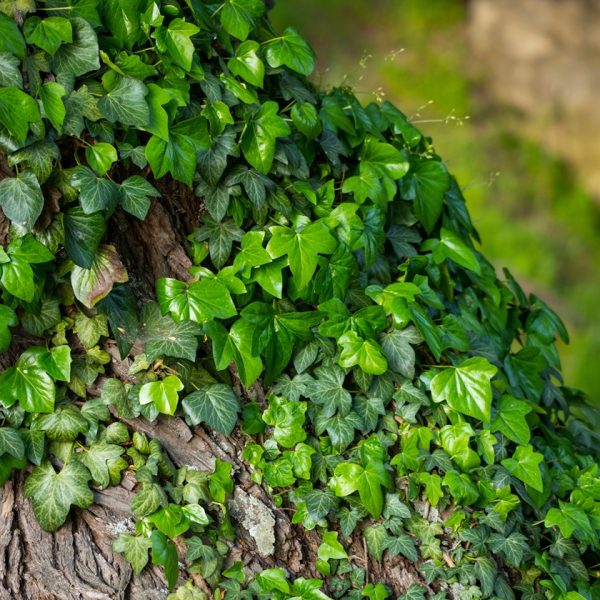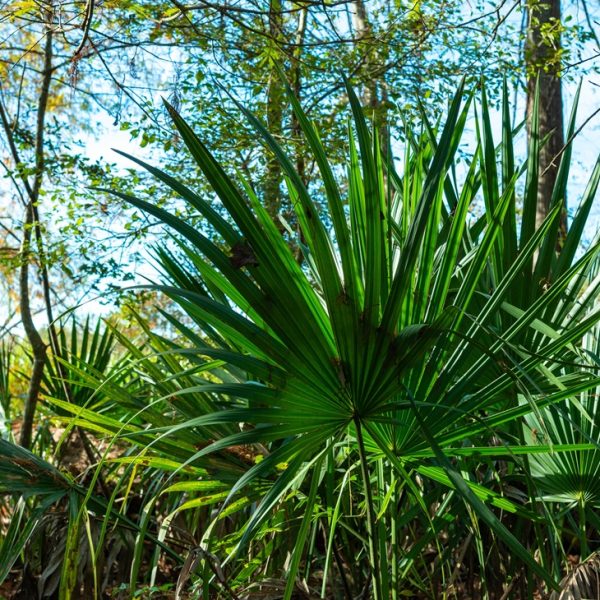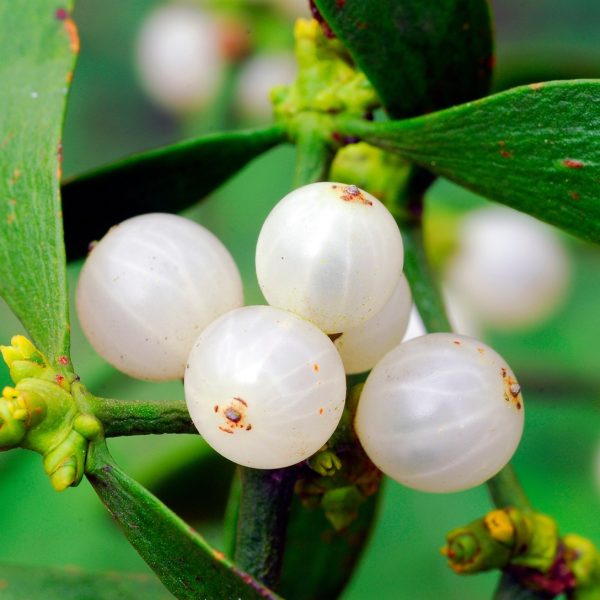COPD is an inflammatory respiratory condition that affects lung health, with associated symptoms of cough, breathlessness, wheeze and fatigue. Explore herbs that can support individuals with COPD.

Understanding COPD
Chronic obstructive pulmonary disease (COPD) is a complex, progressive respiratory disorder that affects airflow in and out of the lungs. It includes conditions such as chronic bronchitis and emphysema, which often occur together (1). COPD represents a significant public health concern, particularly in the United Kingdom, where it affects approximately 1.4 million people and is estimated to contribute to over 30,000 deaths annually (2).
According to Asthma + Lung UK (formerly the British Lung Foundation), COPD is the fifth leading cause of death in the UK and the second most common cause of emergency hospital admissions for respiratory issues (2). The burden of this disease extends beyond mortality as it can significantly impact quality of life, physical functioning, and mental wellbeing (3,4).
How does COPD work?
The main process involving COPD is chronic inflammation in response to long-term exposure to irritants, such as cigarette smoke, environmental pollutants, and occupational chemicals (1). This persistent inflammation results in structural changes within the lungs, including narrowing of the airways, destruction of alveolar walls (emphysema), and hypersecretion of mucus (chronic bronchitis) (1). The small airways become obstructed, making it difficult for air to flow in and out, and alveolar damage reduces the surface area for gas exchange (5).
In emphysema, the alveoli lose their elasticity and merge into larger, less efficient air spaces, leading to reduced oxygen absorption and carbon dioxide elimination. Chronic bronchitis involves prolonged inflammation of the bronchi, with excessive mucus production that impedes airflow and traps pathogens, predisposing individuals to frequent infections. This excessive mucus is less able to be cleared from the lungs, as the cells responsible for clearing the mucus are also being replaced with mucus-producing cells.
The combination of chronic bronchitis and emphysema leads to airflow limitation that is not fully reversible, distinguishing COPD from reversible conditions like asthma (1,5).
Understanding the root causes
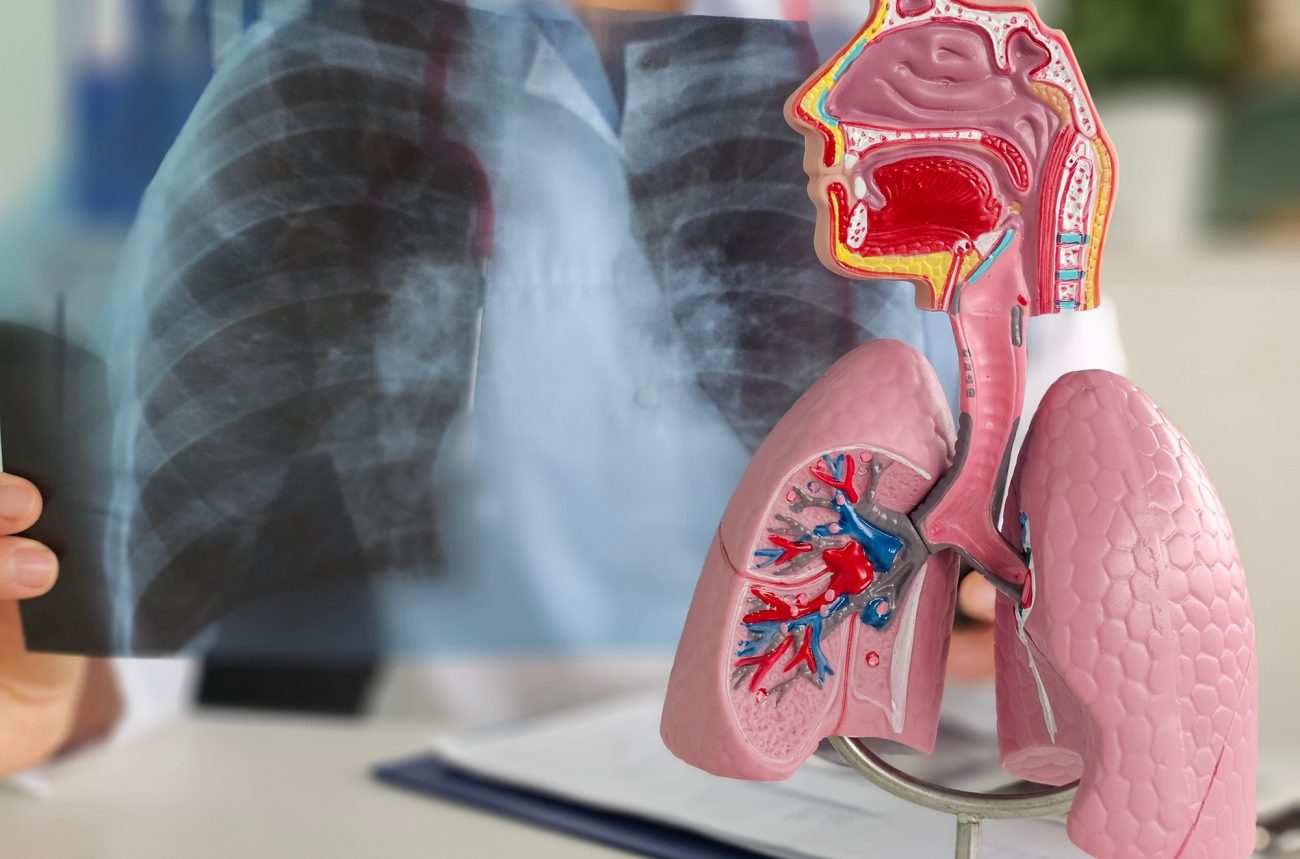
The primary cause of COPD is smoking, accounting for approximately 85–90% of cases (6,7). However, non-smokers can also develop COPD, as environmental exposure to dust, fumes, and chemicals, particularly in certain occupations like construction, mining and manufacturing, plays a significant role. In fact, indoor pollution from biomass fuels (e.g., wood, coal) used for cooking or heating in poorly ventilated homes is a major cause in developing regions (8).
Genetic predisposition, such as alpha-1 antitrypsin deficiency, is another important risk factor. This rare genetic condition results in decreased levels of a protein that protects the lungs from enzymatic damage, leading to early-onset emphysema, even in non-smokers (8).
Other risk factors include recurrent respiratory infections in childhood, poor nutrition, aging, and socioeconomic deprivation, which can exacerbate vulnerability to environmental triggers (2,8).
Signs and symptoms of COPD
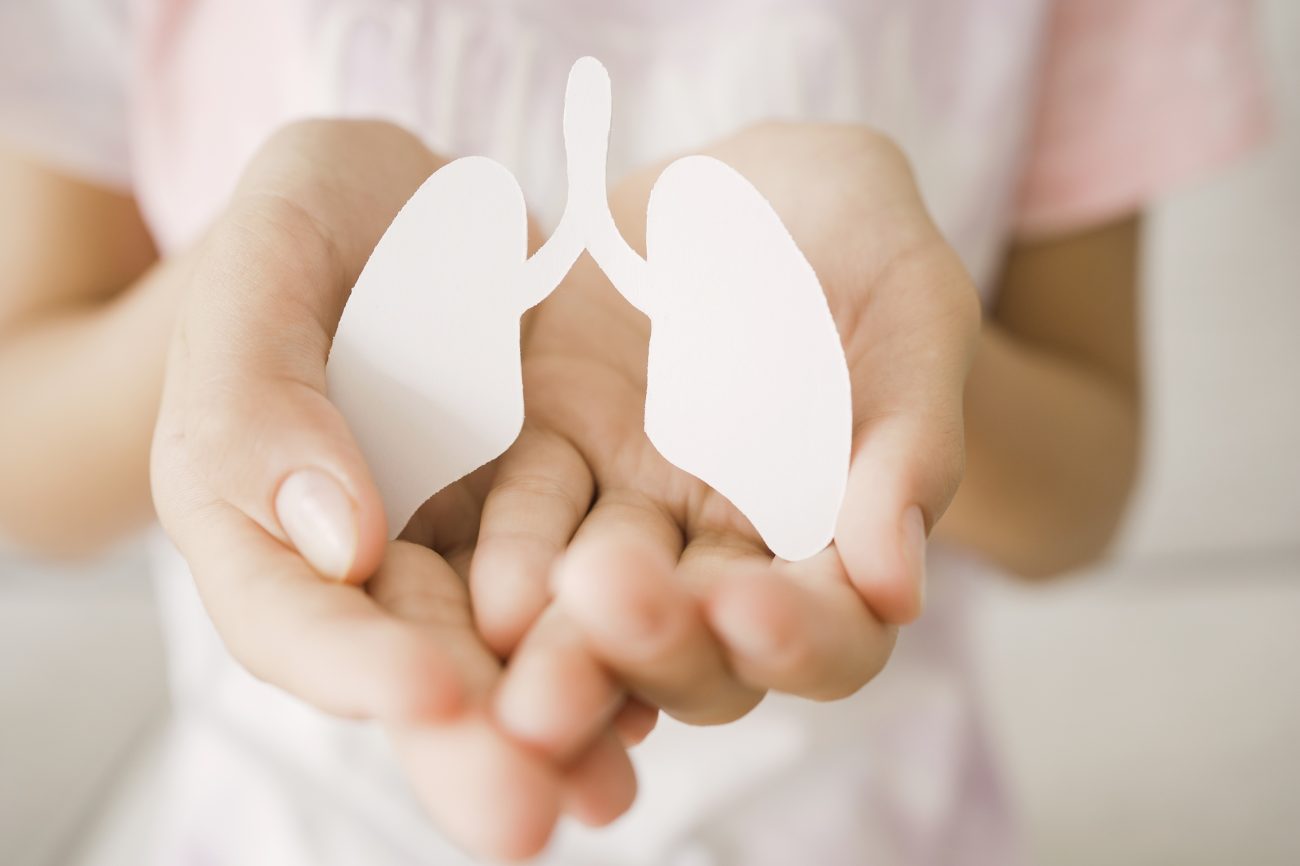
COPD typically develops slowly and may go undiagnosed for years. Common signs and symptoms include (1,9):
- Chronic productive cough (especially in the morning)
- Persistent breathlessness, initially during exertion and eventually at rest
- Wheezing and chest tightness
- Frequent lower respiratory tract infections
- Significant respiratory distress in acute exacerbations
- Fatigue and reduced exercise tolerance
- Pursed-lip breathing
- Unintended weight loss in advanced stages
As the disease progresses, patients may experience episodes of acute worsening, known as exacerbations, often triggered by infections or pollutants. These exacerbations can lead to rapid deterioration, increased hospitalisation, and decreased survival rates (1,10).
Herbal solutions
People with COPD will need a slightly different treatment for acute and for chronic infections. Episodes of acute exacerbations can be treated as any acute respiratory infection, including in the preparation immune-enhancing herbs such as echinacea and strong antibacterial herbs like thyme. For chronic bronchitis and emphysema, the treatment should include a combination of anti-inflammatory, demulcent, antispasmodic and anti-microbial herbs.
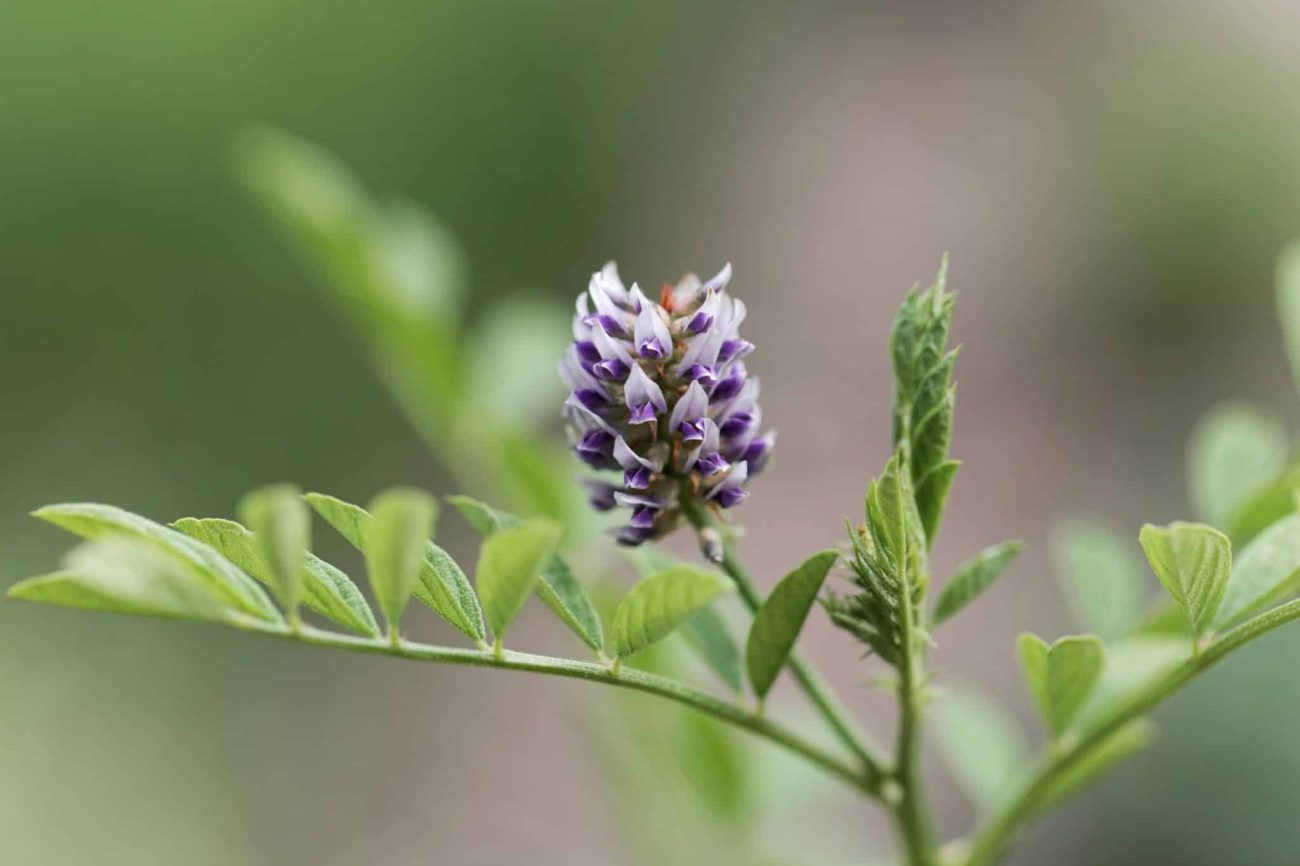
Anti-inflammatory and demulcent herbs
Demulcents are plants rich in mucilage, a polysaccharide that helps soothe mucous membranes. Demulcent herbs and plants can soothe the lining of the respiratory tract. Examples of demulcent herbs with a specific but not exclusive action on the respiratory tract include marshmallow leaf and root, liquorice, plantain, Iceland moss and Irish moss (11).
Anti-inflammatory herbs are important to down-regulate overall bronchial and lung inflammation as this is one of the key pathophysiological drivers of COPD (13). Anti-inflammatory herbs that can be useful are turmeric, ginger, yarrow, echinacea or liquorice.
Liquorice (Glycyrrhiza glabra)
Liquorice is a key herb in respiratory formulations, as it helps soothe mucous membranes, modulates immune responses, and has mucus thinning and anti-inflammatory properties (14). It can be particularly beneficial in chronic bronchitis, as it can help expectorate phlegm, it lowers overall inflammation, and it has a calming effect on the lining of the respiratory tract (11).
Caution is needed in people with hypertension or renal issues due to its glycyrrhizin content. Excessive, long-term use can bring up the blood pressure of people with hypertension and can lower potassium levels in susceptible individuals, so caution and monitoring is necessary (15).
Marshmallow (Althaea officinalis)
Both the leaves and root of marshmallow are rich in mucilage, so it has a strong demulcent action, forming a protective barrier over irritated mucosa and easing dry, persistent coughing. It also has anti-inflammatory properties, which support the healing of inflamed respiratory tissues (11,14).
Ginseng (Panax ginseng)
This ginseng has been studied for its potential benefits in chronic respiratory conditions such as COPD. Preclinical and mechanistic research supports ginseng’s potential benefit in COPD as ginsenosides (its key active constituents) exhibit potent anti-inflammatory and antioxidant actions, modulating and reducing pro-inflammatory cytokines like NF-κB, TNF-α, IL-6 and IL-8 (16).
A systematic review of randomized controlled trials suggest a modest improvement in lung function and quality of life for stable COPD patients using Panax ginseng (17). A RCT using panax ginseng extract (100 mg twice daily for 12 weeks) in 92 patients with moderate COPD demonstrated significant improvement in different lung function values like FEV₁, FVC, peak expiratory flow, maximum voluntary ventilation and inspiratory pressure, all without side effects (18).
Expectorant and antispasmodics
Expectorants have an antispasmodic action, helping bring up mucus or calm different types of coughs. There are different types of expectorant herbs, each with a slightly different action. Stimulative expectorants, like mullein (Verbascum thapsus) and hyssop (Hyssopus officinalis) can be helpful in cases of bronchitis or emphysema, when the mucus is thick or if there is unproductive cough. Warming expectorants, which have a mucolytic and carminative action, are also valuable in bronchitis and emphysema. Examples include aniseed, fennel and angelica. Demulcent expectorants, rich in mucilage, are appropriate for dry, non-productive, irritable cough and asthma, and examples include marshmallow, liquorice, plantain and mullein (11).
Elecampane (Inula helenium)
Elecampane contains inulin and essential oils like alantolactone, which stimulate the expulsion of thick, sticky mucus. This is vital in COPD and chronic bronchitis, where mucus accumulation impairs breathing. It is also considered a lung tonic, as its restorative properties support long-term lung function and soothe irritated bronchial tissues. Its anti-inflammatory properties help reduce inflammation in bronchial passages, easing coughing and tightness (14).
Hyssop (Hyssopus officinalis)
Another good expectorant which can help soothe chronic, spasmodic coughs common in bronchitis and COPD. Hyssop‘s antispasmodic action helps reduce wheezing and bronchial spasms. It can also help with mucus clearance, as it stimulates the movement and expulsion of mucus, clearing congested airways (14, 19).
Fennel (Foeniculum vulgare)
Fennel is a warming expectorant with antispasmodic, carminative and anti-inflammatory actions (11). Fennel’s essential oils contribute to the expectorant action and help with mucus clearance (20,21). It can also ease spasms and reduce coughing and wheezing by relaxing muscles. It is also helpful to ease irritation and inflammation in the airways.
White horehound (Marrubium vulgare)
White horehound is a herb traditionally used as an expectorant and antitussive. It has been used historically in bronchitis for its strong expectorant activity. It can help clear persistent mucus, and it helps restore integrity and responsiveness of the respiratory mucosa over time. It can be useful in chronic cases, especially when phlegm is abundant but difficult to expel (14).
Lobelia (Lobelia inflata)
A powerful respiratory stimulant and bronchodilator, lobelia helps ease breathing and clear mucus (14). Lobelia is a Schedule 20 herb, which means it is regulated under the Human Medicines Regulations 2012 and it needs to be prescribed by herbal practitioners after a one-to-one consultation (22). Due to its potency, it should be used in small, carefully measured doses prescribed by a herbalist.
Ginger (Zingiber officinale)
Ginger is a circulatory stimulant that can potentiate the effect of other expectorants (11). It is also a powerful anti-inflammatory, potentially helping to reduce airway inflammation, which can contribute to an overall improvement of COPD (23).

Antimicrobials
Strong antimicrobial herbs have a role in acute exacerbations and chronic bronchitis. Examples of these include thyme, echinacea, oregano and garlic.
Thyme (Thymus vulgaris)
This aromatic herb has strong antimicrobial properties. It is rich in volatile oils such as thymol and carvacrol, which contribute to its antimicrobial action. It is particularly helpful in managing respiratory infections that often exacerbate COPD. Thyme also exhibits mild bronchodilatory and antispasmodic effects, helping to open constricted airways by relaxing smooth muscle in the bronchial passages, and potentially improving breathing capacity. By encouraging productive coughing, thyme helps in clearing thick respiratory secretions (11,24,25).
Echinacea (Echinacea purpurea, E. angustifolia)
This plant can be beneficial in COPD, particularly during acute exacerbations and in chronic bronchitis, due to its immune-modulating and anti-inflammatory properties (26,27). It has been shown to enhance the activity of macrophages and natural killer cells, supporting the body’s defence against respiratory infections, which are common triggers for COPD flare-ups (28). Echinacea also exhibits antiviral and antibacterial actions, which may help reduce the frequency and severity of infectious exacerbations (29). Additionally, its anti-inflammatory effects can help calm airway inflammation, easing symptoms like cough and mucus production.
Adaptogens and immune modulators
Astragalus (Astragalus membranaceus)
Particularly valuable in individuals with frequent infections or low vitality. Astragalus strengthens immune resistance and supports lung qi, making it ideal in the early or stable stages of COPD. Its use in COPD has been reported in TCM literature (30). Some herbalists note it should be avoided during acute infections (11).
Ashwagandha (Withania somnifera)
Ashwagandha is a calming adaptogen that reduces systemic inflammation, supports adrenal function, and improves physical endurance, it can have a role in supporting people with COPD and fatigue or disrupted sleep that is not associated with sleep apnoea (31).
Siberian ginseng (Eleutherococcus senticosus)
Siberian ginseng enhances stress resilience, stamina, and immune function, contributing to overall recovery and reducing fatigue (11).
Holistic solutions

Smoking cessation
This is the single most important intervention to slow disease progression. If inhaling occupational fumes is a contributing factor, changing jobs may be also necessary (32,33).
Dietary support
An anti-inflammatory diet rich in omega-3 fatty acids (from flaxseed, chia, fish), antioxidants (berries, green leafy vegetables), and lean protein supports tissue repair and reduces systemic inflammation (11,34). Avoidance of inflammatory, mucus producing triggers should also be considered (e.g., processed foods, dairy and/or gluten for some) (34).
Breathing techniques and pulmonary rehabilitation
Pursed-lip breathing and diaphragmatic breathing improve oxygenation and reduce shortness of breath (35,36).
References
- MacNee W. Pathology, pathogenesis, and pathophysiology. BMJ. 2006;332(7551):1202-1204. https://pmc.ncbi.nlm.nih.gov/articles/PMC1463976/
- Asthma + Lung UK. COPD in the UK: Delayed Diagnosis and Unequal Care. 2022. https://www.asthmaandlung.org.uk/conditions/copd-chronic-obstructive-pulmonary-disease/world-copd-day/delayed-diagnosis-unequal-care
- Roberts MH, Mannino DM, Mapel DW, et al. Disease burden and health-related quality of life (HRQoL) of chronic obstructive pulmonary disease (COPD) in the US – evidence from the Medical Expenditure Panel Survey (MEPS) from 2016-2019. Int J Chron Obstruct Pulmon Dis. 2024:1033-1046. https://doi.org/10.2147/COPD.S446696
- Safiri S, Carson-Chahhoud K, Noori M, et al. Burden of chronic obstructive pulmonary disease and its attributable risk factors in 204 countries and territories, 1990-2019: results from the Global Burden of Disease Study 2019. BMJ. 2022;378. https://doi.org/10.1136/bmj-2021-069679
- Goldklang M, Stockley R. Pathophysiology of emphysema and implications. Chronic Obstr Pulm Dis (Miami). 2016;3(1):454. https://doi.org/10.15326/jcopdf.3.1.2015.0175
- World Health Organization. Smoking is the Leading Cause of Chronic Obstructive Pulmonary Disease. Geneva: WHO; 2023. https://www.who.int/news/item/15-11-2023-smoking-is-the-leading-cause-of-chronic-obstructive-pulmonary-disease
- Paulos Dos Santos S, Celli BR. Smoking in COPD patients: a new clinical phenotype? Arch Bronconeumol. 2017;54(5):249-250. https://doi.org/10.1016/j.arbres.2017.10.021
- Brashier BB, Kodgule R. Risk factors and pathophysiology of chronic obstructive pulmonary disease (COPD). J Assoc Physicians India. 2012;60(Suppl):17-21.
- NHS Conditions. https://www.nhs.uk/conditions/chronic-obstructive-pulmonary-disease-copd/symptoms/. Published 2023.
- Soler-Cataluña J, Martínez-García MÁ, Sánchez PR, et al. Severe acute exacerbations and mortality in patients with chronic obstructive pulmonary disease. Thorax. 2005;60(11):925-931. https://doi.org/10.1136/thx.2005.040527
- Mills S, Bone K. Principles and Practice of Phytotherapy. Edinburgh: Churchill Livingstone; 2000.
- Firdaus A, Yunus MH, Izhar SK, Afaq U. Medicinal plants in the treatment of respiratory diseases and their future aspects. Recent Pat Biotechnol. 2025;19(1):2-18. https://doi.org/10.2174/0118722083278561231212072408
- Santana FPR, Pinheiro NM, Mernak MIB, et al. Evidences of herbal medicine‐derived natural products effects in inflammatory lung diseases. Mediators Inflamm. 2016;2016:2348968. https://doi.org/10.1155/2016/2348968
- Fisher C. Materia Medica of Western Herbs. London: Aeon Books; 2018.
- Mumoli N, Cei M. Licorice-induced hypokalemia. Int J Cardiol. 2008;124(3):e42-e44. https://doi.org/10.1016/j.ijcard.2006.11.190
- Shergis JL, Di YM, Zhang AL, et al. Therapeutic potential of Panax ginseng and ginsenosides in the treatment of chronic obstructive pulmonary disease. Complement Ther Med. 2014;22(5):944-953. https://doi.org/10.1016/j.ctim.2014.08.006
- An X, Zhang AL, Yang AW, et al. Oral ginseng formulae for stable chronic obstructive pulmonary disease: a systematic review. Respir Med. 2011;105(2):165-176. https://doi.org/10.1016/j.rmed.2010.11.007
- Gross D, Shenkman Z, Bleiberg B, et al. Ginseng improves pulmonary functions and exercise capacity in patients with COPD. Monaldi Arch Chest Dis. 2002;57(5-6):242-246.
- McIntyre A. The Complete Herbal Tutor: The Definitive Guide to the Principles and Practices of Herbal Medicine. London: Aeon Books; 2019.
- Forster HB, Niklas H, Lutz S. Antispasmodic effects of some medicinal plants. Planta Med. 1980;40(12):309-319. https://doi.org/10.1055/s-2008-1074977
- Portincasa P, Bonfrate L, Scribano ML, et al. Curcumin and fennel essential oil improve symptoms and quality of life in patients with irritable bowel syndrome. J Gastrointestin Liver Dis. 2016;25(2). https://doi.org/10.15403/jgld.2014.1121.252.ccm
- The Human Medicines Regulations 2012, SI 2012/1916, Schedule 20, Regulation 241. https://www.legislation.gov.uk/uksi/2012/1916/contents
- Lorensia A, Pratama AM, Sukarno DA, Suryadinata RV. Effects of red ginger (Zingiber officinale var rubrum) to improve lung function in reducing the risk of COVID-19 in stable COPD patients. Teikyo Med J. 2021;44(6):2667-2676.
- Nabissi M, Marinelli O, Morelli MB, et al. Thyme extract increases mucociliary-beating frequency in primary cell lines from chronic obstructive pulmonary disease patients. Biomed Pharmacother. 2018;105:1248-1253. https://doi.org/10.1016/j.biopha.2018.06.004
- Öner U, Cengiz Z, Erol A. Effects of thyme oil on respiratory systems, hemodynamic parameters and vital signs in COPD patients: a randomized controlled trial. Holist Nurs Pract. 2025; [In press or pagination pending]. https://doi.org/10.1097/hnp.0000000000000745
- Aucoin M, Cooley K, Saunders PR, et al. The effect of Echinacea spp. on the prevention or treatment of COVID-19 and other respiratory tract infections in humans: a rapid review. Adv Integr Med. 2020;7(4):203. https://doi.org/10.1016/j.aimed.2020.07.004
- Catanzaro M, Corsini E, Rosini M, et al. Immunomodulators inspired by nature: a review on curcumin and Echinacea. Molecules. 2018;23(11):2778. https://doi.org/10.3390/molecules23112778
- Sullivan AM, Laba JG, Moore JA, Lee TD. Echinacea-induced macrophage activation. Immunopharmacol Immunotoxicol. 2008;30(3):553-574. https://doi.org/10.1080/08923970802135534
- Isbaniah F, Wiyono WH, Yunus F, et al. Echinacea purpurea along with zinc, selenium and vitamin C to alleviate exacerbations of chronic obstructive pulmonary disease: results from a randomized controlled trial. J Clin Pharm Ther. 2011;36(5):568-576. https://doi.org/10.1111/j.1365-2710.2010.01212.x
- Wu X, Chen Y, Zhang H, et al. Mechanisms and potential roles of active ingredients of traditional Chinese medicine in the treatment of chronic obstructive pulmonary disease. J Pharm Pharmacol. 2025;77(7):866-883. https://doi.org/10.1093/jpp/rgaf018
- Singh P, Salman KA, Shameem M, Warsi MS. Withania somnifera (L.) Dunal as add-on therapy for COPD patients: a randomized, placebo-controlled, double-blind study. Front Pharmacol. 2022;13:901710. https://doi.org/10.3389/fphar.2022.901710
- Jiménez-Ruiz CA, Andreas S, Lewis KE, et al. Statement on smoking cessation in COPD and other pulmonary diseases and in smokers with comorbidities who find it difficult to quit. Eur Respir J. 2015;46(1):61-79. https://doi.org/10.1183/09031936.00092614
- Minov J. Occupational chronic obstructive pulmonary disorder: prevalence and prevention. Expert Rev Respir Med. 2022;16(4):429-436. https://doi.org/10.1080/17476348.2021.2011722
- Fekete M, Csípő T, Fazekas-Pongor V, et al. The possible role of food and diet in the quality of life in patients with COPD—a state-of-the-art review. Nutrients. 2023;15(18):3902. https://doi.org/10.3390/nu15183902
- Li Y, Ji Z, Wang Y, Li X, Xie Y. Breathing exercises in the treatment of COPD: an overview of systematic reviews. Int J Chron Obstruct Pulmon Dis. 2022;:3075-3085. https://doi.org/10.2147/copd.s385855
- Yoshimi K, Ueki J, Seyama K, et al. Pulmonary rehabilitation program including respiratory conditioning for chronic obstructive pulmonary disease (COPD): improved hyperinflation and expiratory flow during tidal breathing. J Thorac Dis. 2012;4(3):259. https://doi.org/10.3978/j.issn.2072-1439.2012.03.17

